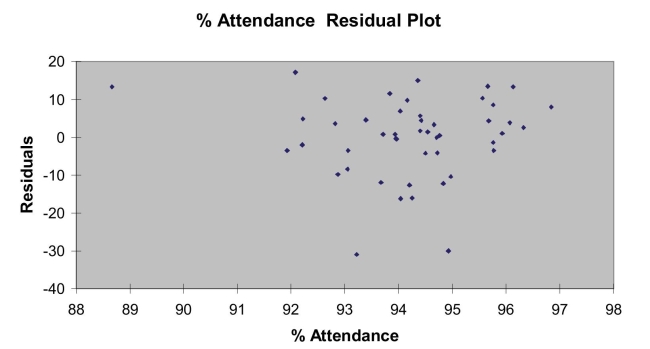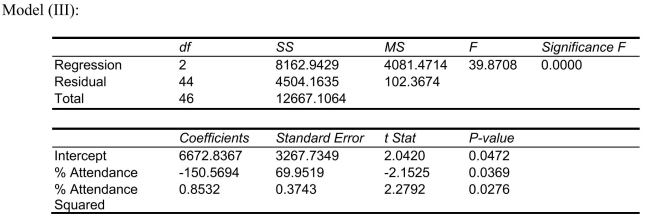Multiple Choice
SCENARIO 15-4 The superintendent of a school district wanted to predict the percentage of students passing a sixth-grade proficiency test.She obtained the data on percentage of students passing the proficiency test (% Passing) , daily mean of the percentage of students attending class (% Attendance) , mean teacher salary in dollars (Salaries) , and instructional spending per pupil in dollars (Spending) of 47 schools in the state. Let Y = % Passing as the dependent variable,  Attendance,
Attendance,  Salaries and
Salaries and  Spending. The coefficient of multiple determination (
Spending. The coefficient of multiple determination (  ) of each of the 3 predictors with all the other remaining predictors are, respectively, 0.0338, 0.4669, and 0.4743. The output from the best-subset regressions is given below:
) of each of the 3 predictors with all the other remaining predictors are, respectively, 0.0338, 0.4669, and 0.4743. The output from the best-subset regressions is given below:  Following is the residual plot for % Attendance:
Following is the residual plot for % Attendance:  Following is the output of several multiple regression models:
Following is the output of several multiple regression models: 


-Referring to Scenario 15-4, the "best" model chosen using the adjusted R-square statistic is
A) 
B) 
C) either of the above
D) None of the above
Correct Answer:

Verified
Correct Answer:
Verified
Q10: With four independent variables in a proposed
Q20: A regression diagnostic tool used to study
Q59: SCENARIO 15-1 <img src="https://d2lvgg3v3hfg70.cloudfront.net/TB2675/.jpg" alt="SCENARIO 15-1
Q64: SCENARIO 15-6<br>Given below are results from the
Q73: SCENARIO 15-4 The superintendent of a school
Q74: SCENARIO 15-1 A certain type of rare
Q75: Two simple regression models were used to
Q76: As a project for his business statistics
Q81: SCENARIO 15-6 Given below are results from
Q83: SCENARIO 15-3 A chemist employed by a